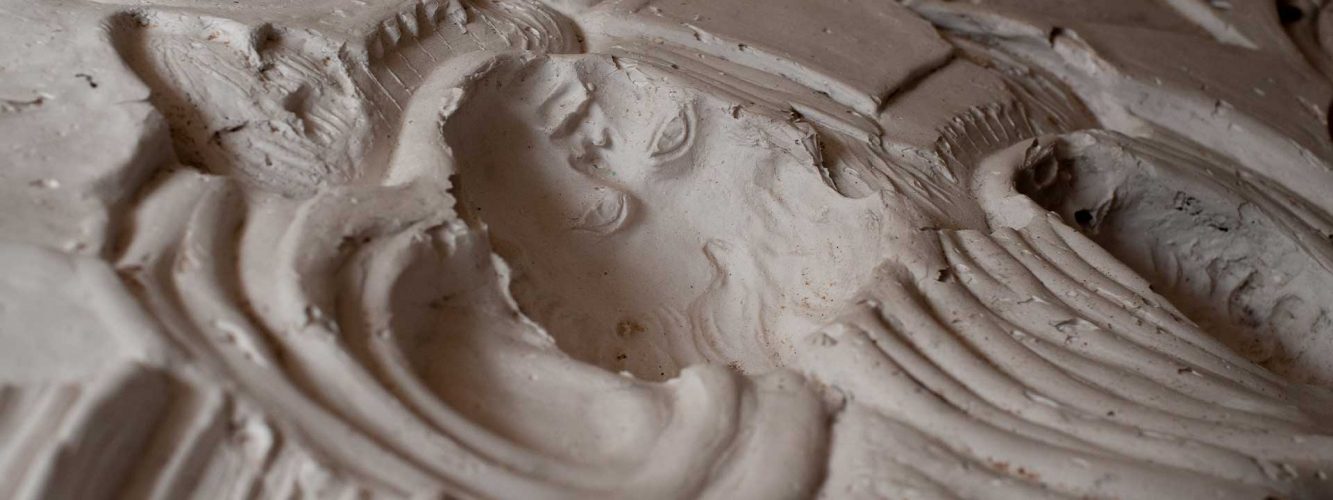
SAVOIR-FAIRE OF
STAFF AND STUCCO
Plaster has been used since Ancient Egypt. It is a mix of water, and calcined and shredded gypsum. The addition of these elements becomes a paste that the craftsman quickly applies to realise a decoration. Staff and stucco are composed of plaster. Nevertherless, the craftsman does not associate them with the same materials.
Staff and stucco
Stucco emerges at the same period and reaches its golden age in the 17th Century. This material is a mix of plaster, pigments and rabbit-skin glue. After the Great Fire of London in 1666, stucco has significantly expanded because of its great imitation skills : simulating marble, tuffeau and granit, etc.
Staff is a contemporary discovery appeared in 1850 and created by M. Mézier. It is made of plaster and jute fabric and has the form of a pre-made ledges. « Staff » is a term invented by Alexandre Dessachy. This technique finds its origin in the old French language “estoffer” which means “enrich, stuffing or adorn”. It has been patented on 2nd December 1861.Therefore, staff has developed itself quickly. The staff is a mixed of plaster and vegetal fibre. Its particularity is to be light and thin enough for its fabrication.
The staffor works with a small-scale model at first or realises a full-size drawing to not forget any details. From sketches, he realises a plaster or a rubber mould. For an easy-to-remove piece, the mould support is often plaster. When all the decoration pieces are made, they are sealed in situ with no trace of junctures. Then, the staff is painted and ready for any kind of patinas.
Eric Leblanc
Thanks to his moulds, the craftsman is interested in all the decoration styles, which allows him to get an unsurpassed delicacy result. This is the case for Eric Leblanc, plasterer, staffor and stucco plasterer. He creates and innovates beyond decoration, mouldings or the vaults’ creation. Indeed, he realises both classical and contemporary arts and crafts, columns, chimneys, sculptures and technical elements which integrate thermic and acoustic functions.

